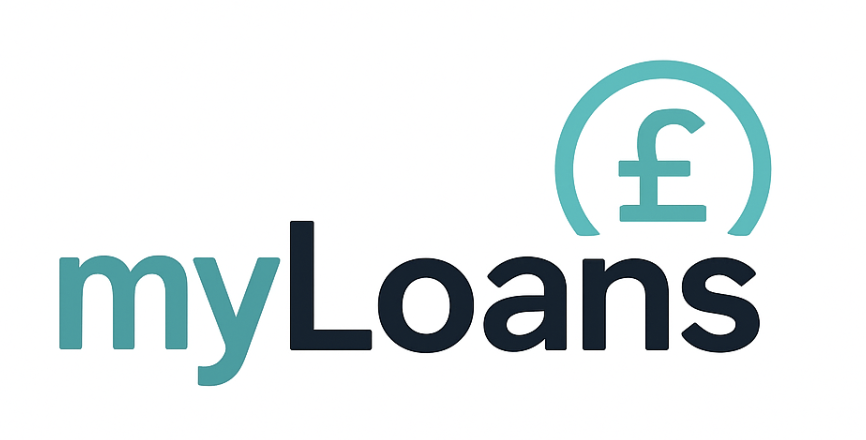Table of Contents
Typical Guarantor Loan Amounts in the UK
Most FCA-regulated guarantor lenders advertise loan ranges of £1,000 to £15,000, repayable over 1 to 5 years.
-
Smaller loans (£1,000–£3,000): Often used for emergencies, car repairs, or clearing small debts.
-
Medium loans (£4,000–£7,500): Common for home improvements, weddings, or significant purchases.
-
Larger loans (£10,000–£15,000): Approved less frequently, typically for borrowers with strong guarantor backing.
📌 Note: Just because a lender advertises £15,000 doesn’t mean every applicant qualifies for that amount.
Minimum Loan Amounts
Most guarantor lenders set their minimum loan at £1,000. Some will allow £500, but these products are rare.
Borrowing less than £1,000 is uncommon, as guarantor loans involve significant admin and affordability checks, making very small amounts less viable for lenders.
Maximum Loan Amounts
The upper borrowing limit for guarantor loans is usually £15,000, though some lenders cap it lower (e.g. £10,000).
Whether you can borrow closer to £15,000 depends on:
-
Your guarantor’s strength: A homeowner with good income and strong credit history can unlock higher limits.
-
Your income: Even with a guarantor, the loan must still be affordable for you.
-
Debt levels: If you already have high existing debts, lenders may reduce the offer or decline.
-
Loan purpose: Some lenders may cap borrowing if the purpose seems high-risk (e.g., gambling or speculative investments are prohibited).
What Factors Affect How Much You Can Borrow?
The loan size you’re offered depends on a mix of borrower and guarantor factors.
1. Borrower’s Income
-
Higher, stable income increases borrowing potential.
-
Lenders typically look at your debt-to-income ratio — how much of your income already goes to debts.
2. Guarantor’s Profile
-
A guarantor with strong credit and steady income allows for higher approvals.
-
Homeowners are often preferred as they demonstrate financial stability.
3. Affordability Rules
-
Lenders must comply with FCA affordability guidelines.
-
They must confirm you can afford the repayments without undue hardship.
4. Credit History
-
While guarantor loans are designed for poor credit, severe issues (recent CCJs, IVAs, bankruptcies) may limit loan size.
5. Loan Purpose
-
Lenders may ask why you want the loan. Debt consolidation or home improvements are viewed more positively than high-risk spending.
Borrower Eligibility and Income Checks
During the application, you’ll provide:
-
Payslips or tax returns
-
Recent bank statements
-
Details of regular expenses (rent, bills, childcare, travel)
Lenders then calculate affordability. Even with a guarantor, if your budget doesn’t leave room for repayments, the loan will be reduced or declined.
Guarantor Profile and Its Impact
Your guarantor’s role is critical in determining how much you can borrow.
-
Strong guarantor (homeowner, good income, clean credit): Likely to unlock the upper borrowing limits (£10,000–£15,000).
-
Weaker guarantor (tenant, lower income, some credit issues): More likely capped at £2,000–£5,000.
📌 Example:
-
Borrower earning £22,000/year with a tenant guarantor may be approved for £3,000.
-
Borrower earning £30,000/year with a homeowner guarantor earning £40,000 may be approved for £10,000+.
Repayment Terms and Affordability
The loan term (1–5 years) directly affects affordability.
-
Shorter term = higher monthly repayments, lower total interest
-
Longer term = lower monthly repayments, higher total interest
Repayment Example (39.9% APR typical):
-
£3,000 over 3 years = ~£140/month, ~£5,000 total repayable
-
£10,000 over 5 years = ~£280/month, ~£16,800 total repayable
Even if you qualify for a higher loan, it may not be affordable long-term.
Should You Borrow the Maximum Available?
Borrowing the maximum a lender offers is tempting — but not always smart.
-
Larger loans = higher total interest costs
-
More pressure on both borrower and guarantor
-
Greater risk of default and damage to both credit scores
Always borrow only what you need and what you can realistically repay.
Alternatives for Larger Borrowing Needs
If £15,000 isn’t enough, or if you don’t have a guarantor, consider:
-
Secured loans: Borrow larger sums against property/assets at lower APRs.
-
Credit unions: Often cheaper for smaller borrowing needs.
-
Debt consolidation loans: Roll multiple debts into one monthly repayment.
-
Government support schemes: May help cover emergency costs without high APRs.
Risks of Borrowing Too Much
Borrowing at the top end of guarantor loan limits can create risks:
-
Debt strain: Repayments consume too much of your income.
-
Guarantor pressure: Larger loans increase the chance your guarantor will be called on.
-
Relationship risk: Family or friendships can be damaged if guarantor liability is triggered.
-
Default impact: Larger debts = more severe consequences if defaulted.
Final Thoughts
In the UK, guarantor loans typically range from £1,000 to £15,000. The exact amount you can borrow depends on your income, existing debts, and — most importantly — your guarantor’s financial position.
While higher amounts are possible, bigger loans mean higher repayments and more risk for your guarantor. Always check affordability first, compare lenders, and borrow only what you genuinely need.
For more insights, see our Guarantor Loans UK Guide and our Eligibility & Application Process.
FAQ: How Much Can You Borrow with a Guarantor Loan?
1. What is the maximum guarantor loan amount in the UK?
Most FCA-regulated guarantor lenders cap their maximum loan at £15,000. The actual amount you qualify for depends on your income, your guarantor’s financial profile, and affordability checks.
2. Do guarantor loans have a minimum amount?
Yes. The minimum loan size is usually £1,000, although some lenders allow as little as £500. Most borrowers apply for at least £1,000–£2,000.
3. Can I borrow £20,000 with a guarantor?
In the UK, guarantor loans above £15,000 are very rare. If you need £20,000 or more, lenders may recommend alternatives such as secured loans or homeowner loans.
4. How does my guarantor affect how much I can borrow?
Your guarantor’s income, credit score, and housing status (homeowner vs tenant) directly affect borrowing limits. A strong guarantor can help you access higher amounts, while a weaker guarantor may result in a smaller loan approval.
5. Should I borrow the maximum available on a guarantor loan?
Not always. Borrowing the maximum may lead to higher repayments and strain your guarantor’s liability. It’s usually safer to borrow only what you need and what you can realistically afford to repay.
How to Apply for a Guarantor Loan in the UK: Step-by-Step Guide
Guarantor loans are designed for borrowers who may struggle to get approved for credit due to poor or limited credit history. If you’re ready to move forward, you may be wondering: how do I apply for a guarantor loan? This guide walks you through the full application...
Loan Guarantors Explained: Who Can Be a Guarantor
When applying for a loan with poor credit, lenders may ask for a loan guarantor. But what does that mean, who can act as a guarantor, and what responsibilities are involved? In this guide, we explain the role of guarantors in the UK, how they affect the loan...
Direct Lender Bad Credit Loans: With and Without Guarantor
When you’re searching for a loan with poor credit, you’ll often come across two terms: direct lenders and guarantor loans. But what does “direct lender” really mean, and how do loans with or without a guarantor compare? This guide explains everything you need to know...
What Happens If You Can’t Pay a Guarantor Loan in the UK?
Guarantor loans can provide vital access to credit for borrowers who have been turned down elsewhere due to bad credit or limited credit history. But what happens if you can’t pay a guarantor loan? The consequences can be serious, affecting both the borrower and the...
Do Guarantor Loans Affect Your Credit Score in the UK?
Before applying for a guarantor loan, many borrowers and guarantors ask the same question: Will this affect my credit score? The answer is yes — guarantor loans can have both positive and negative effects on credit ratings, depending on how the loan is managed. In...
Guarantor Loans: Eligibility and Application Process
A Complete Guide to Guarantor Loans in the UKFinding affordable credit when you have a limited or poor credit history can be challenging. This is where guarantor loans come in. These loans allow you to borrow money with the help of a friend or family member who agrees...








